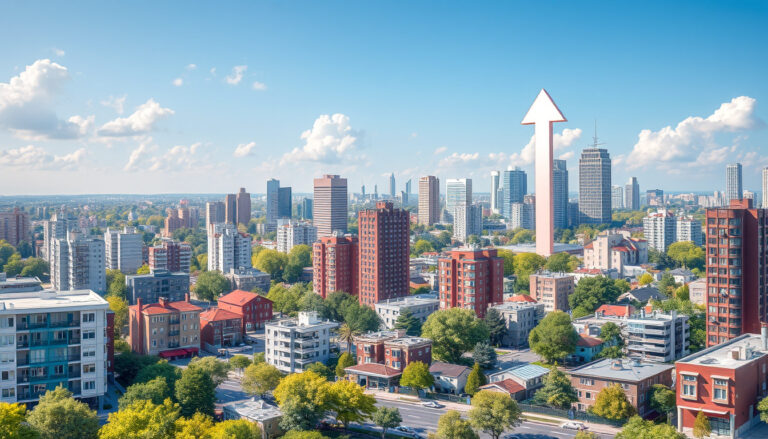Maximizing profits during the low season can be a challenging yet rewarding endeavor for property owners and managers.
With strategic planning, you can boost low season occupancy rates, ensuring that your property remains profitable throughout the year.
In this article, we’ll explore effective strategies to enhance your low season occupancy, from identifying your target markets to implementing promotional campaigns.
With the right approach, you can transform the quiet months into a successful period for your business.

Key Takeaways
- Low season occupancy can significantly impact a business’s profitability.
- Identifying and targeting specific market segments can increase guest attraction during off-peak times.
- Implementing strategic pricing can effectively draw in guests looking for deals during the low season.
- Enhancing the guest experience is crucial in ensuring satisfaction and encouraging repeat visits.
- Evaluating the success of promotional campaigns allows for necessary adjustments to ensure maximum occupancy.
Understanding Low Season Occupancy
Understanding low season occupancy is crucial for anyone looking to invest in Costa Rica real estate, especially in the context of fluctuating tourism patterns.
Low season, typically spanning from May to November, is characterized by fewer visitors and, consequently, lower occupancy rates for rental properties.
During this time, property owners may see a decrease in rental income, as travelers often avoid the rainy season.
However, savvy investors recognize that lower occupancy rates can be offset by reduced competition and lower purchase prices for real estate, offering a unique opportunity to enter the market.
Additionally, improving your property’s appeal through marketing strategies tailored for low season travelers can help boost occupancy during these quieter months.
Understanding the dynamics of low season occupancy will enable potential buyers to make informed decisions and strategically position their properties, maximizing both short-term profits and long-term value.
Identifying Target Markets for Low Season
Understanding how to identify target markets for low season occupancy can significantly enhance the profitability of your Costa Rica real estate investment.
Low season, typically between May and November, sees a decrease in tourist activity, leading to lower occupancy rates for rental properties.
To combat this, it’s essential to target specific demographics that may still be looking for accommodation during these months.
Families seeking budget-friendly vacations, retirees avoiding the high season crowds, and remote workers looking for a serene environment to work from can all be potential targets.
Additionally, marketing efforts tailored to local residents or neighboring countries can also drive occupancy rates up during low season.
By recognizing these niches and creating customized marketing strategies, property owners can increase their low season occupancy and ensure a steady income flow year-round.
‘In the middle of difficulty lies opportunity.’ – Albert Einstein

Strategic Pricing Strategies to Attract Guests
Setting the right price is crucial for attracting guests during low season occupancy, particularly in popular travel destinations like Costa Rica.
To optimize your occupancy rates, consider implementing strategic pricing strategies that can effectively entice potential visitors.
Start by analyzing competitor pricing and adjusting your rates to remain competitive while also taking advantage of any unique features your property offers.
Promotional discounts, such as early-bird bookings or last-minute deals, can draw budget-conscious travelers during this traditionally quieter period.
Additionally, offering value-added packages that include excursions or meals can make your property more appealing without drastically reducing your nightly rate.
Using dynamic pricing tools that adjust rates based on demand, seasonality, and local events can further maximize your booking potential.
By adopting these strategic pricing strategies, you can improve low season occupancy, ensuring a steady influx of guests year-round.
Enhancing Guest Experience During Low Season
Enhancing guest experience during the low season is crucial for maintaining a competitive edge in the hospitality market.
Many travelers are unaware that visiting during this time can offer unique benefits, such as reduced rates and fewer crowds.
To capitalize on this, businesses should implement strategies that highlight the advantages of low season occupancy.
Offering personalized packages that cater to guest preferences, organizing local tours that showcase the area’s hidden gems, or providing complimentary upgrades can significantly enhance the overall experience.
Additionally, leveraging social media to share spotlight stories from past guests can create buzz and encourage bookings during the typically slower months.
By focusing on the unique charm and special activities available during the low season, hotels and resorts can attract discerning travelers looking for exceptional deals while ensuring they leave with memorable experiences.

Promotional Campaigns and Partnerships
In the realm of Costa Rica real estate, understanding the impact of promotional campaigns and partnerships is crucial, especially when considering low season occupancy.
During this quieter period for tourism, real estate investors and property managers can strategically leverage marketing initiatives to attract potential renters and buyers.
Engaging in partnerships with local businesses, such as tour companies or restaurants, can enhance visibility and offer added value to clients.
This holistic approach not only helps maintain steady low season occupancy rates but also builds a strong community presence that can drive traffic year-round.
Additionally, using targeted social media advertisements and special promotions can draw interest to properties that might otherwise go unnoticed during the off-peak months.
As you explore the Costa Rica real estate market, remember that creative promotional strategies can transform the low season into an opportunity for growth.
Measuring Success and Adjusting Strategies
One key metric for evaluating success in the Costa Rica real estate market is understanding low season occupancy rates.
These rates tend to fluctuate significantly, impacting rental profitability and investment returns.
Property owners and investors must closely monitor these trends to adjust their strategies effectively.
By analyzing historical occupancy data during low seasons, investors can better anticipate potential dips in revenue and adjust their marketing efforts accordingly.
This may involve offering attractive promotions or adjusting pricing strategies to increase interest during off-peak periods.
By proactively measuring low season occupancy and refining their approaches, property owners can maximize their investments in Costa Rica’s vibrant real estate landscape.
Frequently Asked Questions
What is low season occupancy?
Low season occupancy refers to the period when hotels or vacation rentals experience a decline in booking rates due to various factors like weather, holidays, or local events.
Understanding this season is crucial for implementing strategies to increase guest numbers during these slower times.
How can I identify target markets for low season occupancy?
Identifying target markets involves analyzing demographics, travel behavior, and interests of potential guests who are likely to travel during low seasons.
This could include families, couples looking for off-peak deals, or specific interest groups such as outdoor enthusiasts or cultural travelers.
What pricing strategies can I implement to attract guests during low season?
Effective pricing strategies include offering discounts, creating package deals, or implementing dynamic pricing models that adjust rates based on demand.
Consider bundling services or adding incentives to encourage longer stays.
How can I enhance the guest experience during low season?
Improving the guest experience can involve personalized services, offering unique local experiences, or hosting special events that take advantage of lower occupancy.
Ensuring that staff are trained to provide excellent service can also significantly enhance guest satisfaction.
How do I measure the success of my low season strategies?
Success can be measured through various metrics such as occupancy rates, revenue per available room (RevPAR), guest feedback, and return on investment (ROI) from promotional campaigns.
Tracking these metrics over time will help in adjusting strategies effectively.





